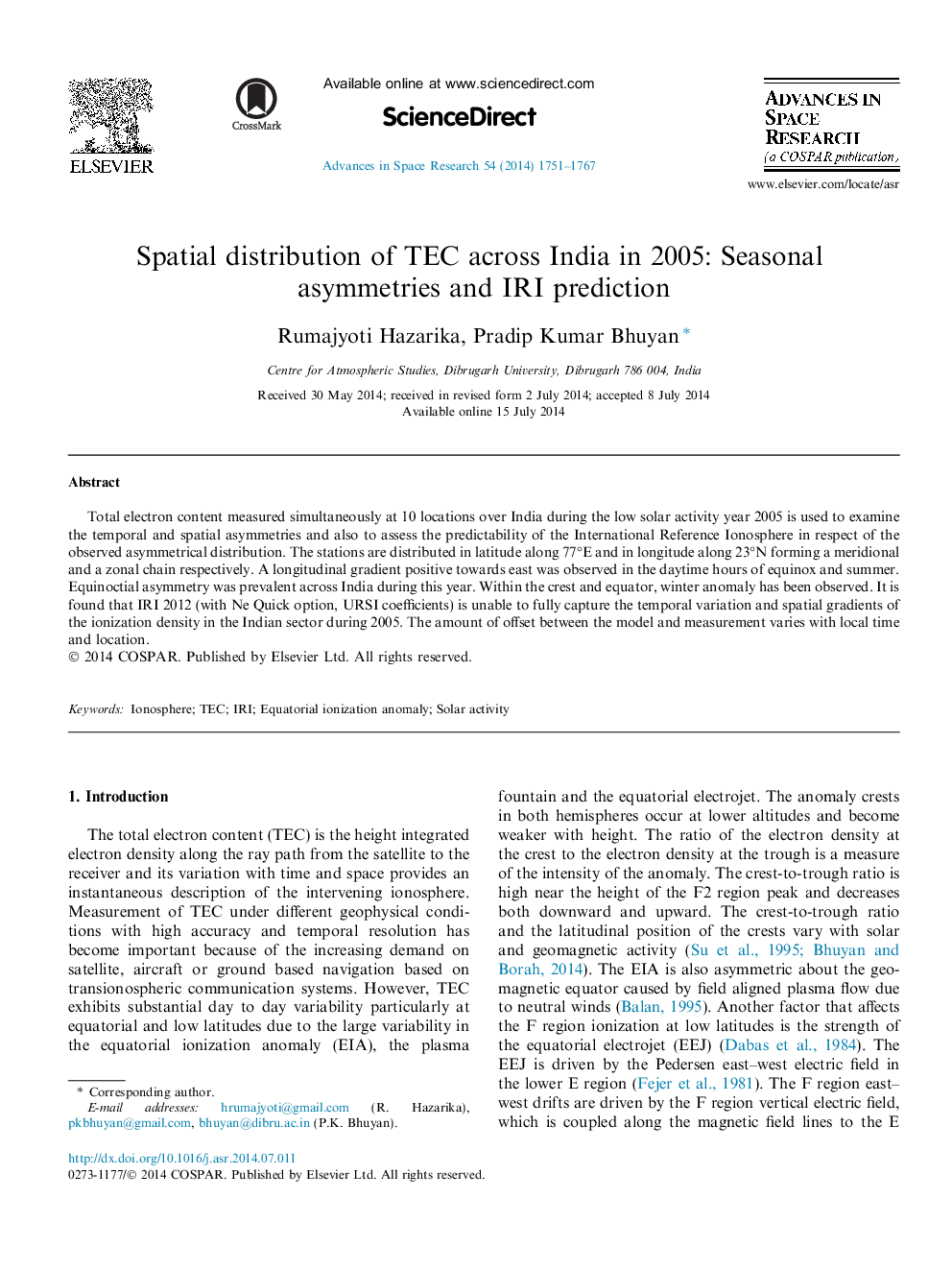| Article ID | Journal | Published Year | Pages | File Type |
|---|---|---|---|---|
| 1763841 | Advances in Space Research | 2014 | 17 Pages |
Abstract
Total electron content measured simultaneously at 10 locations over India during the low solar activity year 2005 is used to examine the temporal and spatial asymmetries and also to assess the predictability of the International Reference Ionosphere in respect of the observed asymmetrical distribution. The stations are distributed in latitude along 77°E and in longitude along 23°N forming a meridional and a zonal chain respectively. A longitudinal gradient positive towards east was observed in the daytime hours of equinox and summer. Equinoctial asymmetry was prevalent across India during this year. Within the crest and equator, winter anomaly has been observed. It is found that IRI 2012 (with Ne Quick option, URSI coefficients) is unable to fully capture the temporal variation and spatial gradients of the ionization density in the Indian sector during 2005. The amount of offset between the model and measurement varies with local time and location.
Related Topics
Physical Sciences and Engineering
Earth and Planetary Sciences
Space and Planetary Science
Authors
Rumajyoti Hazarika, Pradip Kumar Bhuyan,
